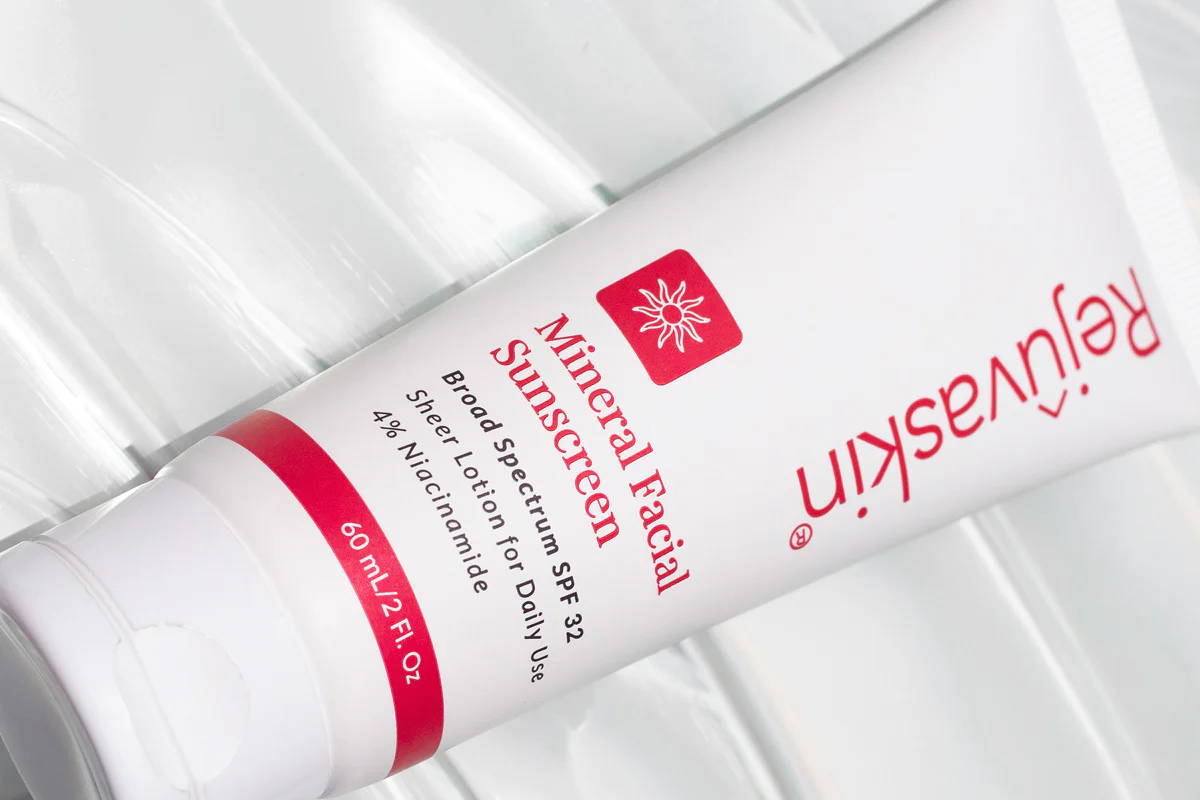Mineral Sunscreen vs. Chemical Sunscreen
AUTHOR
Edward C
CATEGORY
Science And Health
PUBLISHED
July 11, 2023
REVISED
July 11, 2023

Introduction
We all know we should be wearing sunscreen year-round, but applying SPF is particularly important in the warmer seasons, and this time of year, the sun is blazing! You may have heard claims of chemical sunscreens containing ingredients that may cause hormonal problems, skin sensitivity, tissue damage, hormone disruption, or even increase the risk of some cancers. It is important to know what exactly you’re putting on your skin. While not all ingredients make it into your bloodstream, recent studies show that many chemical sunscreens contain potentially harmful ingredients that do penetrate the skin and may be detrimental to your health.
The FDA recently updated its sunscreen regulations, finding titanium dioxide and zinc oxide to be safe and effective. New studies have shown that homosalate, avobenzone, and oxybenzone, ingredients found in most US sunscreens, have endocrine-disrupting effects. The European Commission has found that the levels being used in oxybenzone and homosalate to be unsafe, with a suggested concentration of 2.2 percent and 1.4 percent. “U.S. sunscreen manufacturers are legally allowed to use these two chemicals at concentrations up to 6 and 15 percent, respectively, and hundreds of sunscreens manufactured in the U.S. use them at concentrations that far exceed the European Commission’s recommendations.” These ingredients are all absorbed into the body after one use and can be found on the skin and in the blood after weeks of not being used (EWG, n.d.b).
According to research, the most concerning active ingredient found in sunscreen is oxybenzone. The CDC has found higher levels in Americans who report applying sunscreen compared to those who don’t (EWG, n.d.a). Studies have also shown that adolescent boys with higher levels of oxybenzone had significantly lower levels of testosterone, and separate studies found that in females, oxybenzone can disrupt endocrine and may increase the risk of endometriosis and breast cancer. (EWG, n.d.a). Brands such as Mario Badescu, Hawaiian Tropic, Neutrogena, and many others use this ingredient in their sunscreens and products.
The FDA deemed two ingredients safe and effective: titanium dioxide and zinc oxide. Typically in the form of nanoparticles, mineral sunscreens are formulated with these two ingredients. “Evidence suggests that few if any zinc or titanium particles penetrate the skin to reach living tissues” (EWG, n.d.b). According to the EWG and The Good Face Project (n.d.) database, mineral sunscreens rate better than chemical sunscreens. Rejuvaskin’s new Mineral Facial Sunscreen is deemed safe with The Good Face Project seal of approval. With a 32 SPF and a 100% mineral based protection, the formula leaves a lightweight, dry finish with no white-casting. After extensive research and careful consideration, Rejuvaskin chose a clean, environment safe formula with zinc oxide, a high safety profile mineral sunscreen ingredient that screens both UVA and UVB radiation.
Email Skinsiders@Rejuvaskin.com to try out the Mineral Facial Sunscreen! Be sure to share your practice name, location, and specialty.
References
EWG. (n.d.). EWG Skin Deep®: What is oxybenzone. EWG. Retrieved July 19, 2022, from https://www.ewg.org/skindeep/ingredients/704372-OXYBENZONE/
EWG. (n.d.). The trouble with ingredients in sunscreens [web log]. Retrieved July 19, 2022, from https://www.ewg.org/sunscreen/report/the-trouble-with-sunscreen-chemicals/.
Good Face Project. (n.d.). Zinc oxide: The good face project. Innovation for the Next Generation of Beauty. Retrieved July 19, 2022, from https://thegoodfaceproject.com/ingredients/zinc_oxide


